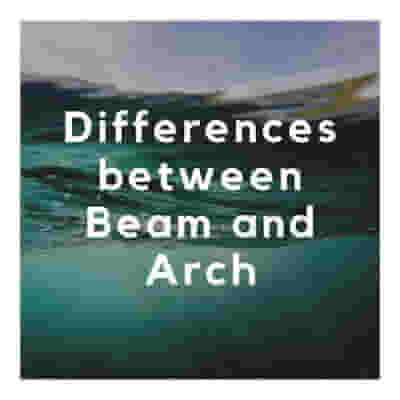Difference between Beam and Arch
Today we are discussing the Difference between Beam and Arch. This Is the topic of civil engineering.ARCH
CURVED SHAPED. HAVE MORE STRENGTH THAN BEAM
or
a curved symmetrical structure spanning an opening and typically supporting the weight of a bridge, roof, or wall above it.
BEAM
STRAIGHT SHAPE.LESS STRENGTH THAN ARCH
or
a long, sturdy piece of squared timber or metal used to support the roof or floor of a building.
Difference
A curved beam can be an arch but an arch is not necessarily made from a curved beam. An arch can be fabricated from many materials. One form of an arch is a gravity arch where properly shaped stones or blocks are correctly shaped and laid so gravity holds the arch in place.
- The structural behavior of a beam is in a state of equilibrium if the constraints permit no rigid body movement upon the application of loads. Whereas an arch may be looked upon as a curved girder, either a solid rib or braced supported at its ends and carrying transverse loads which are frequently vertical.
- If a beam or structure is stable under the action of forces in a plane, three conditions of equilibrium must be satisfied whereas an arch is subjected to three restraining forces : (a) thrust (b) shear force, and (c) bending moment.
Arch
An arch may be looked upon as a curved girder, either a solid rib or braced, supported at its ends and carrying transverse leads which are frequently vertical. Since the transverse loading at any section normal to the axis of the girder is at an angle to the normal face, an arch is subjected to three restraining forces
- Thrust
- Shear force,
- Bending moment
Types of Arch
- Three hinged arch
- Two hinged arch
- Single hinged arch
- Fixed arch (hingeless arch)

